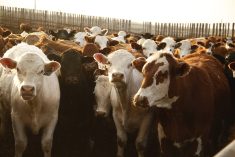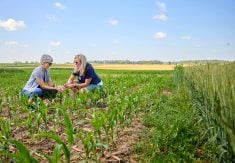A group of cattle industry players are working together to develop a high-immune response test for Angus cattle, which could help fight Bovine Respiratory Disease (BRD).
The project, which received $500,000 in funding in early February from Genome Canada’s Genomic Application Partnership Program, aims to reduce the $1 billion BRD is estimated to cost the cattle sector in a year. BRD is considered the most common disease affecting feedlot cattle in North America.
Semex, the cattle genetics company, is involved, along with the University of Guelph’s Dr. Bonnie Mallard, Angus Genetics Inc. and the Canadian Angus Association.
Read Also

Farmers taking to social media to spread the word about the cost of farm thefts
A rash of farm thefts in Ontario have left farmers looking for new ways to help customers understand the cost of stealing goods.
Semex and Mallard have already created Immunity +, which is a high immune response program in Holsteins, that identifies genetics that are more able to fight disease.
“It will provide three major benefits,” said Mallard. “The first is to the animal, because healthier animals are better off all the way around. The second is to the producer. They save time and money because they don’t have to spend time treating sick animals with antibiotics or other therapeutics as much as they would under normal circumstances. And the third benefit is to the consumer, of course, because you (the consumer) can sit with confidence when you eat that steak, knowing that it came from naturally healthy animals, that were produced in a healthy and sustained environment.”
“Semex is taking our Immunity+ technology to the beef industry,” says Dr. Michael Lohuis, Semex vice president research and innovation. “Our goal is to develop a more sustainable beef product for both our clients and the consumer. At Semex we believe that if we’re going to meet tomorrow’s challenges, we can’t do it using yesterday’s tools and these sorts of innovations will get us there.”












